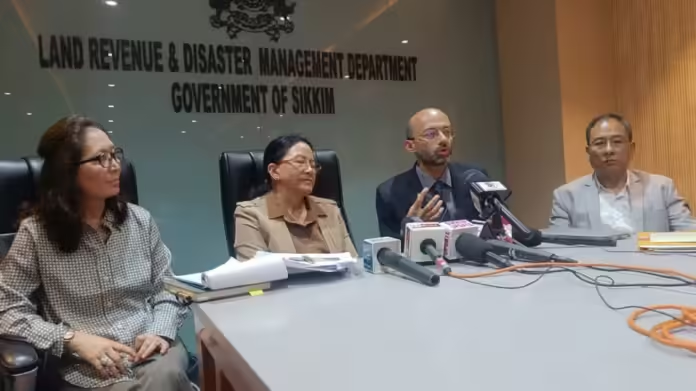The Sikkim government has launched a significant initiative to address potential risks associated with high-altitude lakes in the state. From August 28 to September 14, a high-level multidisciplinary team will study 16 high-risk lakes in Sikkim. This ambitious project aims to identify and mitigate threats posed by these lakes, ensuring both safety and environmental protection.
Sikkim, known for its stunning landscapes and numerous lakes, faces challenges related to high-altitude water bodies. These lakes, often situated in fragile ecosystems, can pose risks of glacial lake outburst floods (GLOFs) and other natural hazards. The state government has recognized the need for a comprehensive assessment to address these risks proactively.
The study will involve experts from various fields, including glaciology, hydrology, environmental science, and engineering. By combining their expertise, the team aims to gain a thorough understanding of the lakes’ current conditions, potential hazards, and the impact of climate change. This multidisciplinary approach is designed to provide a holistic view of the challenges and possible solutions.
The government’s initiative comes in response to increasing concerns about the stability of high-altitude lakes. Recent years have seen a rise in incidents related to GLOFs, which can cause devastating floods and damage to infrastructure. By conducting this detailed study, the government hopes to develop effective mitigation strategies to prevent such disasters and protect local communities.
The study will use advanced technologies and field surveys to collect data on the lakes’ physical and environmental conditions. This includes monitoring water levels, ice and snow cover, and potential geological changes. The team will also assess the impact of climate change on these lakes, as shifting weather patterns and rising temperatures can affect their stability.
In addition to data collection, the study will involve risk modeling to predict potential scenarios and outcomes. This will help in designing and implementing appropriate safety measures and early warning systems. The findings will be used to formulate recommendations for managing and mitigating risks associated with the lakes.
The state government has expressed its commitment to ensuring the safety of residents and preserving Sikkim’s natural environment. Chief Minister Prem Singh Tamang emphasized the importance of this study in safeguarding against potential hazards. He highlighted that the results would be crucial in guiding future policies and interventions related to high-altitude lakes.
Community engagement is also a key component of the study. The government plans to involve local residents and stakeholders in the process, seeking their input and raising awareness about the risks associated with high-altitude lakes. By fostering collaboration, the government aims to ensure that the mitigation strategies are practical and effective.
The study’s outcomes will be pivotal in shaping future efforts to manage high-risk lakes in Sikkim. The government intends to use the results to develop a comprehensive action plan that includes infrastructure improvements, emergency response protocols, and ongoing monitoring. This proactive approach will help minimize risks and enhance the resilience of local communities.
As the study progresses, the government will provide updates on its findings and any proposed measures. The initiative reflects a broader commitment to addressing environmental challenges and protecting vulnerable areas in Sikkim. By investing in this high-level study, the state government demonstrates its dedication to ensuring the safety and well-being of its residents.
Overall, the launch of this multidisciplinary study marks a significant step in managing the risks associated with high-altitude lakes in Sikkim. The comprehensive approach, combined with community involvement and advanced technologies, aims to provide valuable insights and solutions for mitigating potential hazards. The government’s efforts underscore its commitment to addressing environmental challenges and safeguarding the natural beauty of Sikkim for future generations.




